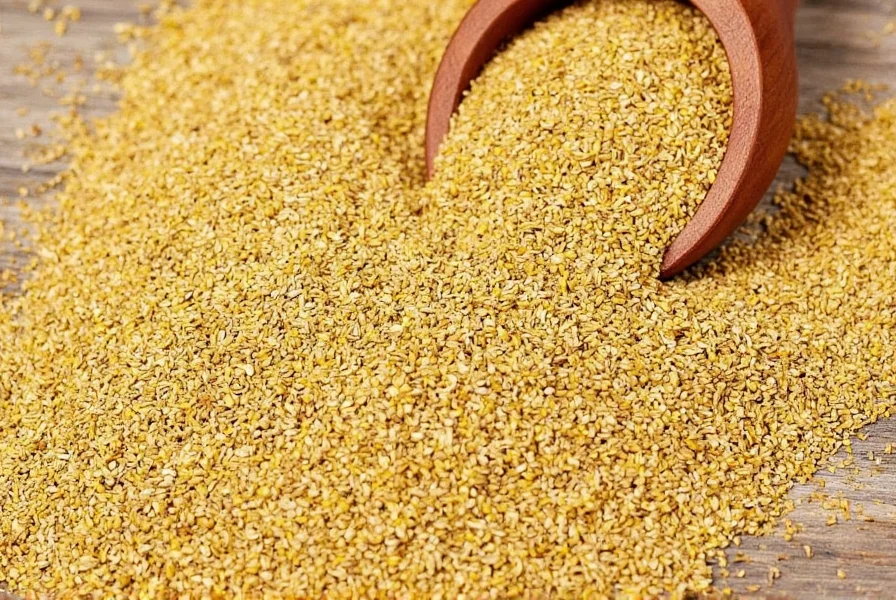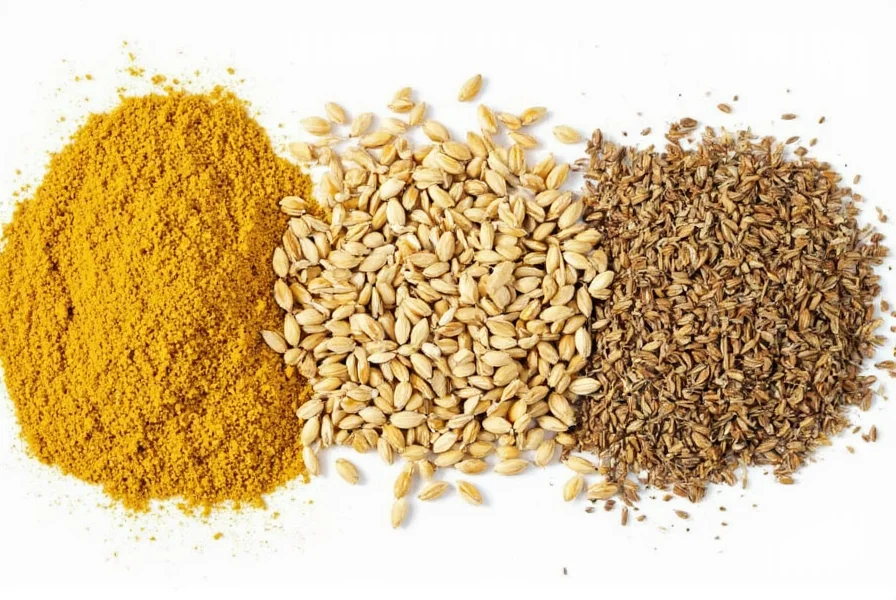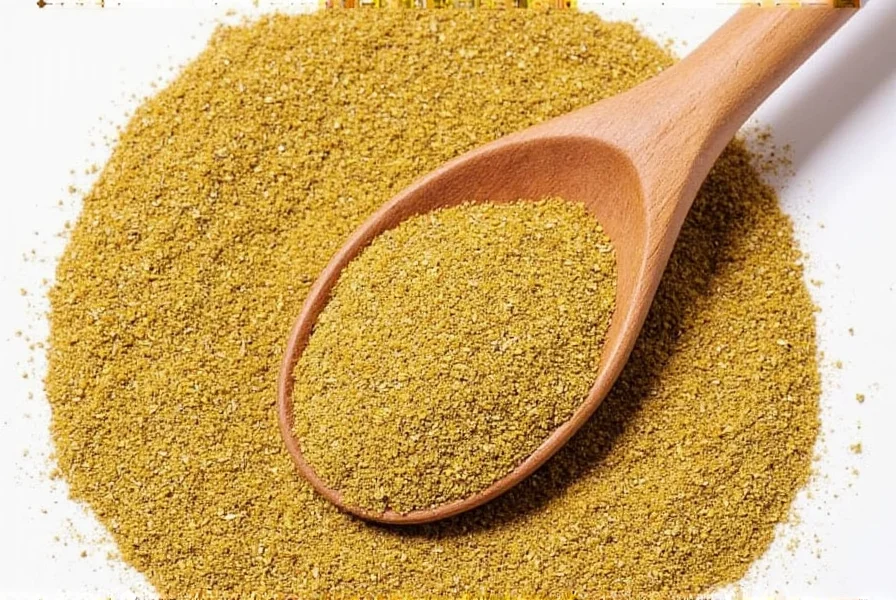When you need a mustard seed substitute, the best options are prepared mustard (use 1 tablespoon for every 1 teaspoon of seeds), mustard powder (1:1 ratio), or horseradish (1:1 ratio for pungent dishes). For yellow mustard seeds, try turmeric with vinegar; for brown/black seeds, use wasabi paste diluted with water. Whole grain mustard works well in pickling recipes as a direct replacement.
If you've ever reached for mustard seeds while cooking only to find your container empty, you're not alone. This common kitchen dilemma requires more than a simple swap—different mustard seed varieties serve distinct purposes in recipes. Understanding which substitute preserves your dish's intended flavor profile is crucial for culinary success. Whether you're making Indian curries, German sauerkraut, or homemade pickles, the right alternative can save your recipe without compromising quality.
Understanding Mustard Seeds and Their Culinary Roles
Before exploring substitutes, it's essential to recognize that mustard seeds come in three primary varieties, each with unique characteristics:
| Seed Type | Flavor Profile | Common Culinary Uses |
|---|---|---|
| Yellow (White) | Mild, slightly tangy | American yellow mustard, pickling, salad dressings |
| Brown | Medium heat, complex | Indian curries, stir-fries, Middle Eastern dishes |
| Black | Strongest, pungent | Traditional Indian recipes, specialty condiments |
Each variety releases different flavor compounds when heated, explaining why direct substitutions require careful consideration. The enzymatic reaction that creates mustard's characteristic heat only occurs when seeds are ground and mixed with liquid—a process that affects which substitutes work best for specific applications.
Top Mustard Seed Substitutes with Practical Applications
Prepared Mustard: The Most Versatile Alternative
When seeking a yellow mustard seed replacement, prepared mustard provides immediate flavor with minimal adjustment. For every teaspoon of mustard seeds called for in a recipe, use one tablespoon of prepared mustard. This mustard seed substitute for pickling works exceptionally well because it already contains the vinegar and liquid components that activate mustard's flavor compounds.
Different mustard varieties serve specific purposes:
- Yellow mustard: Best for American-style recipes and mild dressings
- Dijon mustard: Ideal for French sauces and marinades requiring sharpness
- Whole grain mustard: Perfect substitute for mustard seeds in sauerkraut due to its texture and flavor complexity

Mustard Powder: Precision Replacement
Mustard powder offers the most accurate flavor replication when you need a mustard seed substitute measurement conversion. Use a 1:1 ratio by volume (1 teaspoon powder for 1 teaspoon seeds), but remember to reconstitute it properly. Mix the powder with cold liquid first, then let it sit for 10-15 minutes before adding to hot dishes—this allows the enzymes to activate fully.
Chef's tip: For Indian recipes requiring tempered mustard seeds, mix 1 teaspoon mustard powder with 2 teaspoons water and add during the tadka (tempering) process. This technique creates the closest approximation to the popping seed texture and flavor release.
Horseradish and Wasabi: For Pungent Applications
When substituting for brown or black mustard seeds in strongly flavored dishes, horseradish provides comparable heat. Use a 1:1 ratio of prepared horseradish for seeds in recipes like German potato salad or robust meat marinades. The best substitute for black mustard seeds in traditional Bengali dishes is actually wasabi paste diluted with water (1 part wasabi to 3 parts water), which mimics the intense heat profile.
Specialty Substitutes for Specific Dietary Needs
For those requiring gluten-free mustard seed substitute options, verify that prepared mustards don't contain wheat-based thickeners. Many commercial mustards use vinegar derived from wheat, making them unsuitable for strict gluten-free diets. In these cases, create your own substitute by mixing mustard powder with gluten-free vinegar and water.
Vegan cooks should note that some prepared mustards contain honey or dairy derivatives. A reliable vegan substitute for mustard seeds combines horseradish, turmeric, and apple cider vinegar to replicate both color and tang without animal products.
Advanced Substitution Techniques
Professional chefs often use combination approaches when seeking the perfect mustard seed replacement for curry. Try this chef-recommended blend:
- ½ teaspoon mustard powder
- ¼ teaspoon turmeric (for color)
- ⅛ teaspoon horseradish
- 1 teaspoon water or vinegar
Mix these ingredients and let them sit for 15 minutes before adding to your curry base. This combination replicates both the visual appearance and complex flavor profile of brown mustard seeds when tempered in hot oil.
When Substitutions Won't Work
Some recipes fundamentally rely on mustard seeds' textural properties. In traditional Bengali shorshe ilish (hilsa fish in mustard sauce), the popping seeds create pockets of intense flavor that no substitute can fully replicate. Similarly, in certain pickling recipes, the visual presence of whole seeds contributes to the expected appearance. In these cases, consider modifying your recipe rather than forcing a substitution.
Storage Tips for Substitute Ingredients
Unlike whole mustard seeds which retain potency for 3-4 years when stored properly, most substitutes have shorter shelf lives. Prepared mustards maintain quality for 12-18 months refrigerated after opening, while homemade mustard powder blends should be used within 3 months. Store mustard powder in an airtight container away from light and moisture to preserve its enzymatic activity.
Can I use mustard powder instead of mustard seeds in pickling?
Yes, use a 1:1 ratio of mustard powder to seeds in pickling recipes. However, mix the powder with cold water first and let it sit for 10 minutes before adding to your pickling liquid. This allows the enzymes to activate properly, creating the characteristic mustard flavor without the texture of whole seeds.
What's the best substitute for black mustard seeds in Indian cooking?
For authentic Indian recipes requiring black mustard seeds, the closest substitute is a mixture of ¾ teaspoon brown mustard seeds plus ¼ teaspoon mustard powder. If you don't have either, use 1 teaspoon of prepared whole grain mustard added during the tempering process. This combination best replicates the intense heat and complex flavor profile of black mustard seeds when heated in oil.
How do I substitute mustard seeds in a vegan recipe?
Create a vegan mustard seed substitute by combining 1 teaspoon Dijon mustard (verify it's vegan), ½ teaspoon horseradish, and a pinch of turmeric with 1 tablespoon of water. Let the mixture sit for 15 minutes before using. This provides the heat, tang, and yellow color of traditional yellow mustard seeds without any animal products.
Can I use wasabi instead of mustard seeds?
Yes, wasabi works as a substitute for brown or black mustard seeds in certain applications. Mix 1 part wasabi paste with 3 parts water to create a substitute for 1 teaspoon of mustard seeds. This works particularly well in Asian-inspired dishes or when making spicy mayonnaise. Note that wasabi has a different flavor profile—more horseradish-like—so it won't replicate the exact mustard flavor but will provide similar heat.
How much prepared mustard equals one teaspoon of mustard seeds?
Use one tablespoon of prepared mustard for every teaspoon of mustard seeds called for in a recipe. This accounts for the liquid content in prepared mustard. For recipes where liquid content matters (like baking), reduce other liquids by 2 teaspoons for each tablespoon of mustard used as a substitute.












 浙公网安备
33010002000092号
浙公网安备
33010002000092号 浙B2-20120091-4
浙B2-20120091-4